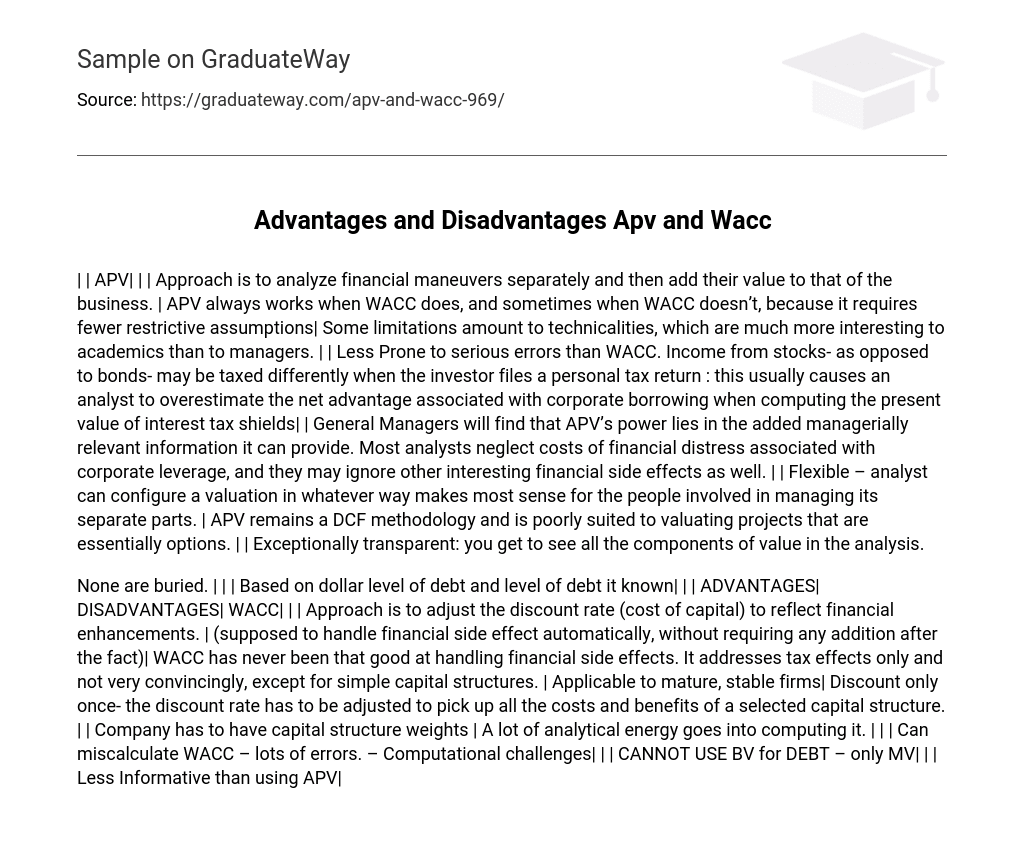| | APV| | | Approach is to analyze financial maneuvers separately and then a| | |dd their value to that of the business. | APV always works when WACC does, and sometimes w| | |hen WACC doesn’t, because it requires fewer restrictive assumptions| Some limitations amount to technicalities, which are much more interesting to academics than to managers. | | Less Prone to serious errors than WACC. Income from stocks- as opposed to bonds- ma| | |y be taxed differently when the investor files a personal tax return : this usually causes an analyst to overestimate the net advantage ass| | |ociated with corporate borro| | |wing when computing the present value of interest tax shields| | General Managers will find that APV’s power lies in the added managerially relevant inform| | |ation it can provide. Most analysts neglect costs of financial distress associated with corporat| | |e leverage, and they may ignore other interesting financial side effects as well. | | Flexible – analyst can configure a valuation in whatever way makes most sense fo| | |r the people involved in managing its separate parts. | APV remains a DCF me| | |thodology and is poorly suited to valuating projects that are essentially options. | | Exceptionally transparent: you get to see all the components of value in the analysis.
None are buried. | | | Based on dollar l| | |evel of debt and level of debt it known| | | ADVANTAGES| DISADVANTAGES| WACC| | | Approach is to adjust the discount rate (cost of capital) to reflect financial enhanc| | |ements. | (supposed to handl| | |e financial side effect automatically, without requiring any addition after the fact)| WACC has never been that good at handling financial side effects. It addresses tax effects only and not very convincingly, except for simple capital structures. | Applicable to mature, stable firms| Discount only once- the discount rate has to be adjusted to pick up all the costs and benefits of a selected capital structure. | | Company has to have capital structure weights | A lot of analytical energy goes into computing it. | | | Can miscalculate WACC – lots of errors. – Computational challenges| | | CANNOT USE BV for DEBT – only MV| | | Less Informative than using APV|





